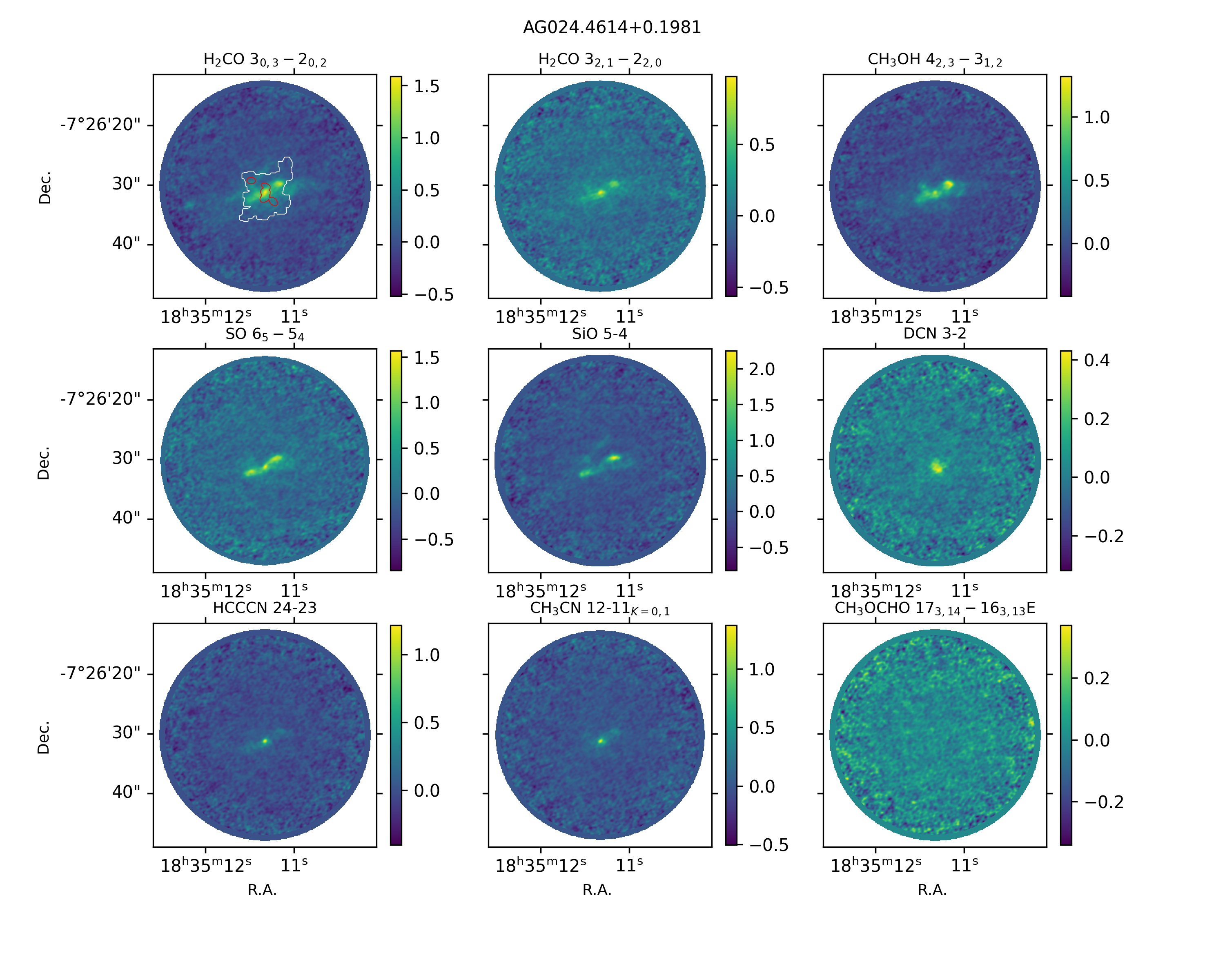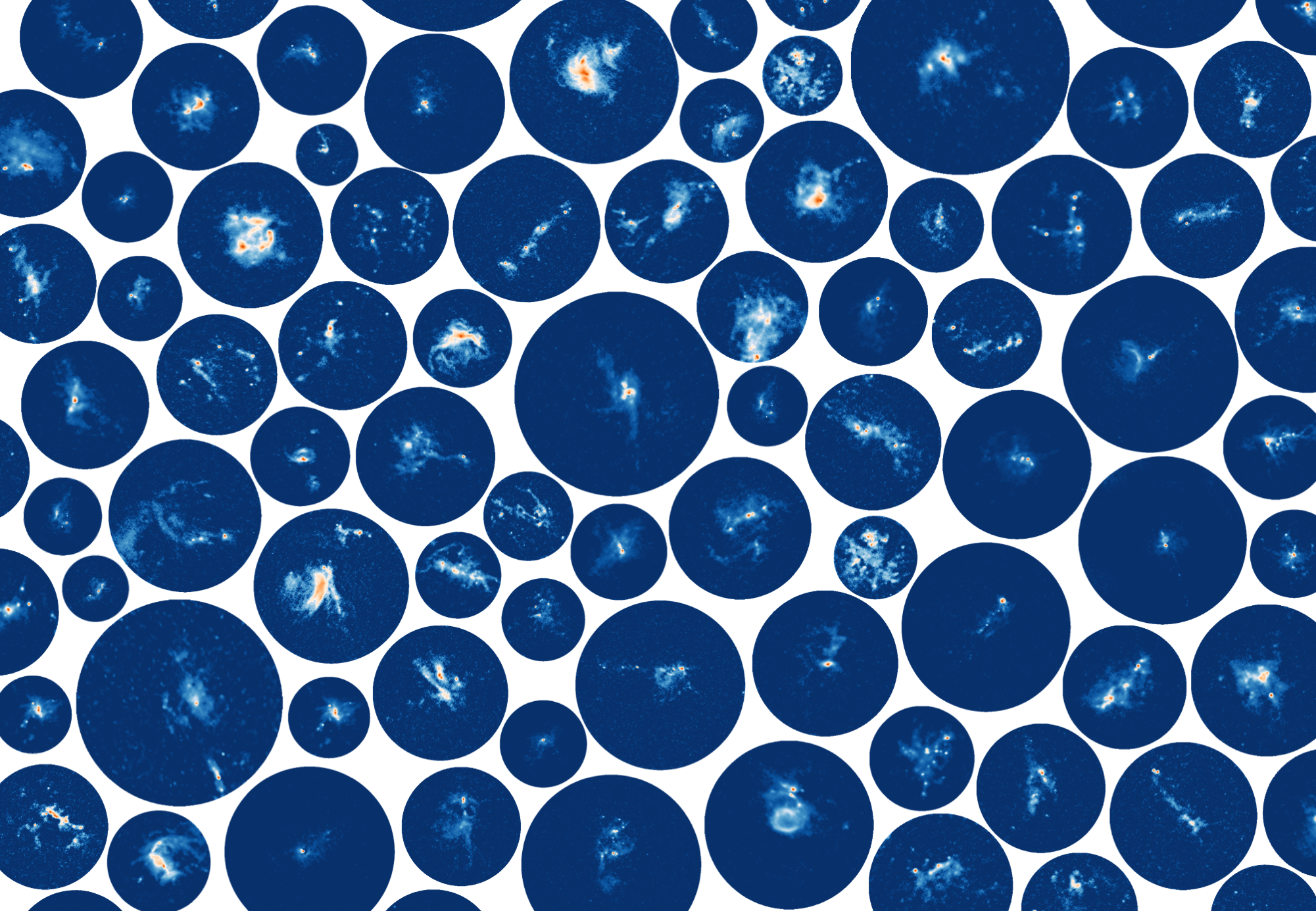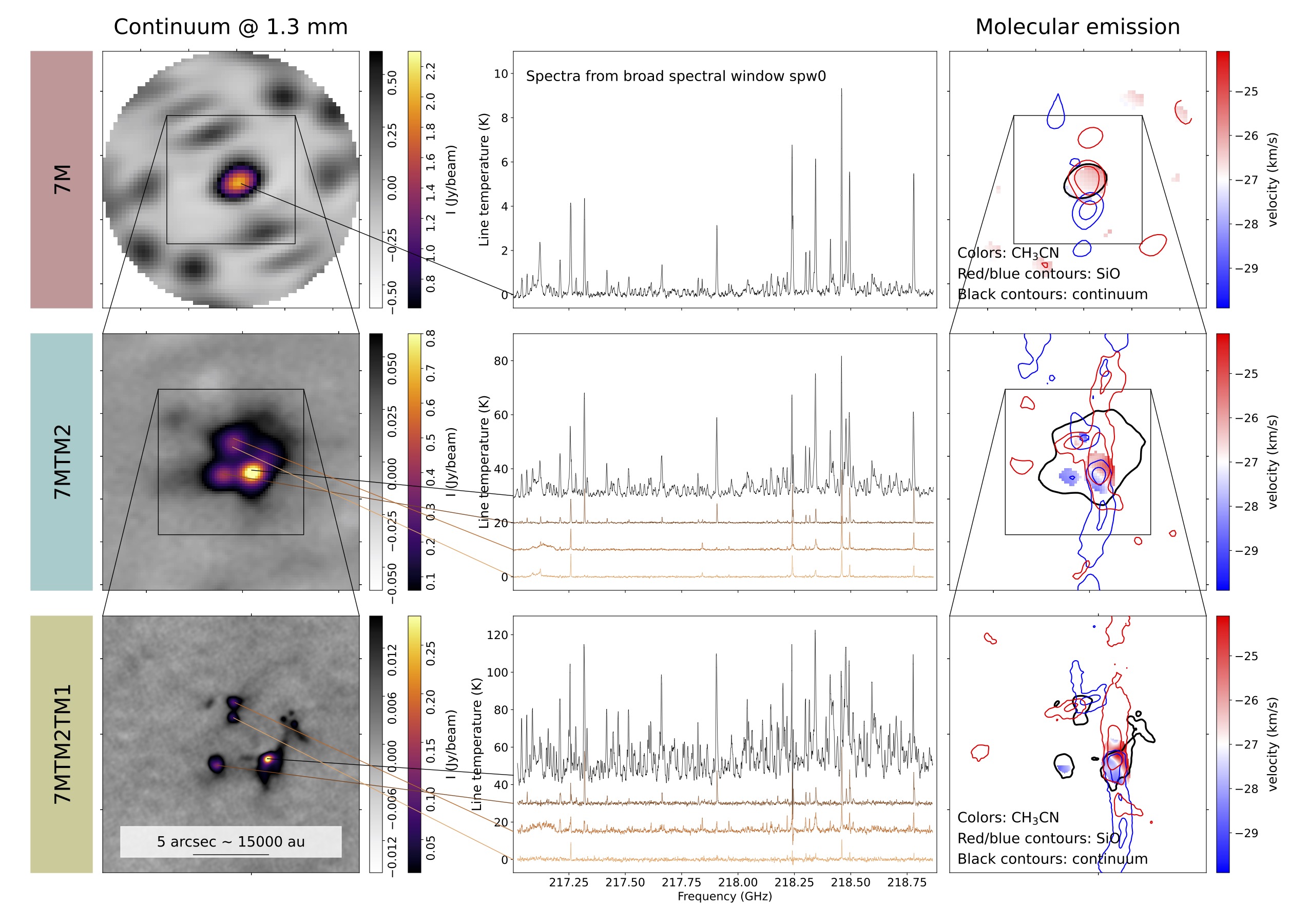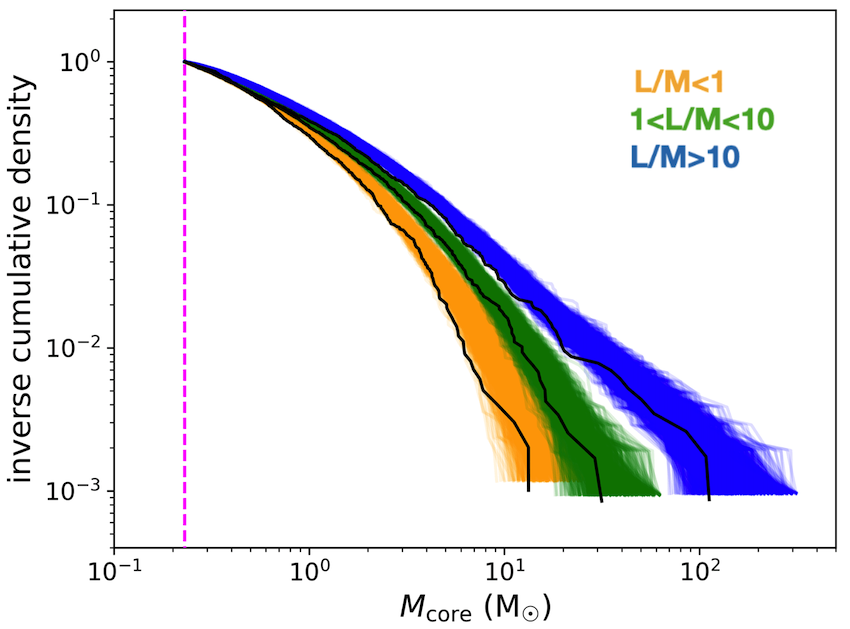Publications

ALMAGAL V. Relations between the core populations and the parent clump physical properties
The fragmentation of massive molecular clumps into smaller, potentially star-forming cores plays a key role in the processes of high-mass star formation. The ALMAGAL project offers high-resolution data to investigate these processes across various evolutionary stages in the Galactic plane. This study aims at correlating the fragmentation properties of massive clumps, obtained from ALMA observations, with their global physical parameters (e.g., mass, surface density, and temperature) and evolutionary indicators (such as luminosity-to-mass ratio and bolometric temperature) obtained from Herschel observations. It seeks to assess whether the cores evolve in number and mass in tandem with their host clumps, and to determine the possible factors influencing the formation of massive cores (M > 24 M⊙).

Dynamical accretion flows - ALMAGAL: Flows along filamentary structures in high-mass star-forming clusters
Investigating the flow of material along filamentary structures towards the central core can help provide insights into high-mass star formation and evolution. Our main motivation is to answer the question of what the properties of accretion flows are in star-forming clusters. We used data from the ALMA Evolutionary Study of High Mass Protocluster Formation in the Galaxy (ALMAGAL) survey to study 100 ALMAGAL regions at a ∼1" resolution, located between ∼2 and 6 kpc.
Making use of the ALMAGAL ∼1.3 mm line and continuum data, we estimated flow rates onto individual cores. We focus specifically on flow rates along filamentary structures associated with these cores. Our primary analysis is centered around position velocity cuts in H2CO (30,3–20,2), which allow us to measure the velocity fields surrounding these cores. Combining this work with column density estimates, we were able to derive the flow rates along the extended filamentary structures associated with cores in these regions.

ALMAGAL IV. Morphological comparison of molecular and thermal dust emission using the histogram of oriented gradients method
The study of molecular line emission is crucial to unveil the kinematics and the physical conditions of gas in star-forming regions. We use data from the ALMAGAL survey, which provides an unprecedentedly large statistical sample of high-mass star-forming clumps that helps us to remove bias and reduce noise (e.g., due to source peculiarities, selection, or environmental effects) to determine how well individual molecular species trace continuum emission. We selected transitions of H2CO, CH3OH, DCN, HC3N, CH3CN, CH3OCHO, SO, and SiO and compared them with the 1.38 mm dust continuum emission at different spatial scales in the ALMAGAL sample. For the first time, we used the method called histogram of oriented gradients (HOG) as implemented in the tool astroHOG on a large statistical sample to compare the morphology of integrated line emission with maps of the 1.38 mm dust continuum emission.

ALMAGAL I. The ALMA evolutionary study of high-mass protocluster formation in the Galaxy. Presentation of the survey and early results
Fundamental questions about the physics responsible for fragmenting molecular parsec-scale clumps into cores of a few thousand astronomical units (au) are still open, that only a statistically significant investigation with ALMA is able to address. With the ALMAGAL project, we observed the 1.38 mm continuum and lines toward more than 1000 dense clumps in our Galaxy, with M ≥ 500 M⊙, Σ ≥ 0.1 g cm−2 and d ≤ 7.5 kiloparsec (kpc). The sample covers all evolutionary stages from infrared dark clouds (IRDCs) to Hii regions from the tip of the Galactic bar to the outskirts of the Galaxy. ALMAGAL is poised to serve as a game-changer for a number of specific issues in star formation: clump-to-core fragmentation processes, demographics of cores, core and clump gas chemistry and dynamics, infall and outflow dynamics, and disk detections.

ALMAGAL II. The ALMA evolutionary study of high-mass protocluster formation in the Galaxy. ALMA data processing and pipeline
In this work, we present the acquisition and processing of the ALMAGAL data. The main goal is to set up a robust pipeline that generates science-ready products, that is, continuum and spectral cubes for each ALMAGAL field, with a good and uniform quality across the whole sample. Each ALMAGAL field was observed in three different ALMA arrays, being sensitive to spatial scales ranging from ≈ 1000 au up to ≈ 0.1 pc. The spectral setup allows sensitive (≈ 0.1 mJy beam−1 ) imaging of the continuum emission at 219 GHz (or 1.38 mm), and it covers multiple molecular spectral lines observed in four different spectral windows that span about ≈ 4 GHz in frequency coverage.

ALMAGAL III. Compact source catalog: Fragmentation statistics and physical evolution of the core population
The physical mechanisms behind the fragmentation of high-mass dense clumps into compact star-forming cores and the properties of these cores are fundamental topics that are heavily investigated in current astrophysical research. The ALMAGAL survey provides the opportunity to study this process at an unprecedented level of detail and statistical significance, featuring high-angular resolution 1.38 mm ALMA observations of 1013 massive dense clumps at various Galactic locations. Here, we present the catalog of compact sources obtained with the CuTEx algorithm from continuum images of the full ALMAGAL clump sample combining ACA-7m and 12m ALMA arrays, reaching a uniform high median spatial resolution of ∼ 1400 au (down to ∼ 800 au). The ALMAGAL compact source catalog includes 6348 cores detected in 844 clumps (83% of the total), with a number of cores per clump between 1 and 49 (median of 5).
